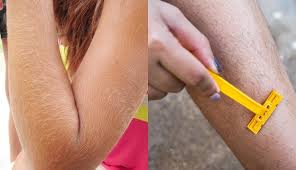What if the stuff of horror movies—growing thick hair all over your body, looking like a werewolf—wasn’t just fiction? For some, this eerie transformation is a reality. Welcome to the world of Werewolf Syndrome, known in medical terms as Hypertrichosis—a rare and mysterious condition that causes excessive hair growth anywhere on the body, often with no clear explanation.
What Is Werewolf Syndrome?
Werewolf Syndrome, or Hypertrichosis, is an unusual disorder marked by abnormal hair growth. The hair may appear on small, isolated patches of the skin—or, in more extreme cases, spread across the entire body. It can be congenital (present at birth) or acquired (developing later in life).
Let’s dive into the strange types of this condition:
1. Congenital Hypertrichosis Lanuginosa
This form starts in infancy. Babies are born with a soft, fine layer of hair called lanugo—something that typically falls off shortly after birth. But in affected infants, this baby fuzz keeps growing and spreads across the body.
2. Congenital Terminal Hypertrichosis
Here, hair growth begins at birth and never stops. The hair is long, dark, and coarse—covering the face, limbs, and torso, making the person resemble the legendary werewolf.
3. Nevoid Hypertrichosis
Hair overgrowth is limited to a specific patch or patches of skin. Sometimes, a large “tuft” of hair can grow on the lower back, a warning sign of underlying spinal issues like spina bifida.
4. Hirsutism
More common in women, hirsutism results in dark, coarse hair growing in male-pattern areas such as the face, chest, and back. It’s often linked to hormonal imbalances.
5. Acquired Hypertrichosis
This form develops later in life and can affect specific areas or the entire body. It may produce various types of hair—fine or coarse—and is frequently linked to medication or disease.

Disturbing Signs and Symptoms
The most obvious sign of Hypertrichosis is, of course, hair. But not just any hair—three distinctive types can emerge:
- Lanugo Hair: Thin, light, unpigmented fuzz seen on newborns. In Werewolf Syndrome, it persists unnaturally into childhood and beyond.
- Vellus Hair: Short, soft hair covering much of the body. In this syndrome, it grows in unusual places like the face, chest, or back.
- Terminal Hair: Thick, dark, coarse hair normally found on the scalp, underarms, or pubic area—but in sufferers, it can grow anywhere.
- In rare cases, patients may also experience dental abnormalities or gum overgrowth.
Emotional Toll and Social Isolation
For many, the psychological burden is heavier than the physical. Children and adults living with this condition often face bullying, social rejection, and low self-esteem. Without access to permanent hair removal treatments, sufferers may feel trapped in their own skin—unable to live freely or comfortably in society’s harsh spotlight.
What Causes This Hairy Nightmare?
1. Congenital Causes
Some scientists believe congenital Hypertrichosis may be the result of ancient, dormant genes reawakening. These “hair genes” once helped our ancestors stay warm, but were turned off as humans evolved. A random mutation might switch them back on—resulting in a modern-day werewolf.
2. Acquired Causes
In many acquired cases, Hypertrichosis can be triggered by certain drugs or diseases. Known medications include:
- Antibiotics (e.g., Streptomycin)
- Anti-inflammatories (e.g., Corticosteroids)
- Vasodilators (e.g., Minoxidil)
- Diuretics (e.g., Acetazolamide)
- Anti-seizure medications (e.g., Phenytoin)
- Immunosuppressants (e.g., Cyclosporine)
- Other causes include malnutrition, advanced HIV, brain trauma, or even tumors.
3. Nevoid Hypertrichosis
This localized form may appear alone or be tied to other conditions like lipodystrophy, spinal curvature, or vascular malformations.
Who’s at Risk?
Hypertrichosis affects both men and women, though specific inherited forms can be more common in males. Some risk factors include:
- A family history of the condition
- Originating from the Mediterranean, Middle East, or South Asia
- Obesity or repeated skin trauma
- Use of certain skin medications like corticosteroids or PUVA treatments
- Underlying cancers such as lung or breast cancer
Diagnosis: Unraveling the Mystery
Doctors typically diagnose Werewolf Syndrome through a clinical exam and patient history. If needed, they may recommend:
- Hormonal blood tests to rule out endocrine disorders
- Genetic testing to identify mutations
- Imaging tests (like ultrasounds) to detect internal causes, including tumors
Is There a Cure?
Sadly, there is no universal cure. Treatment focuses on hair removal, with both temporary and long-term options:
- Temporary Methods:
+ Shaving
+ Waxing
+ Chemical depilatories
+ However, these can cause pain, skin irritation, or infections, and hair always grows back.

Permanent Methods:
- Electrolysis: Destroys individual hair follicles with electric currents
- Laser Hair Removal: Targets and removes multiple hairs at once using intense light
- These offer longer-lasting results, but require repeated sessions—and can be expensive or painful.
When to See a Doctor
If you or your child shows unusual hair growth, especially in combination with other symptoms or family history, don’t hesitate to seek medical advice. Early diagnosis can help manage symptoms and rule out serious underlying conditions.
The Thin Line Between Myth and Medicine
Werewolf legends may belong to horror folklore, but Hypertrichosis is very real. It’s not a curse or punishment—it’s a medical anomaly, and those who suffer from it deserve understanding, not mockery.
By shedding light on this haunting disorder, we bring awareness, empathy, and perhaps one step closer to solutions for those caught in a hairy battle with their own bodies.

